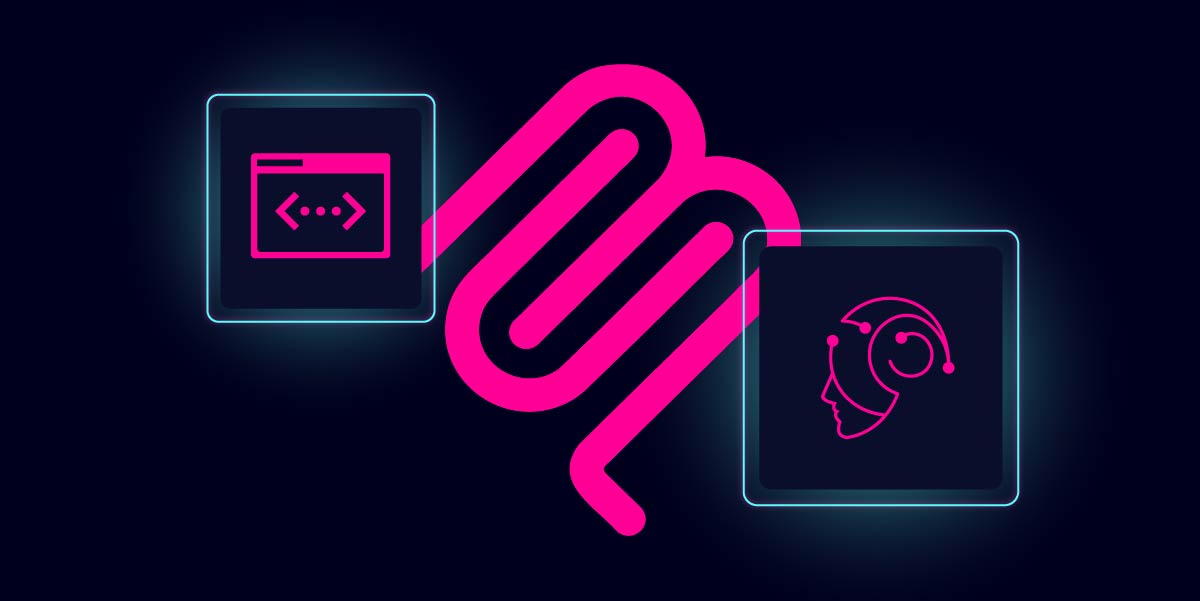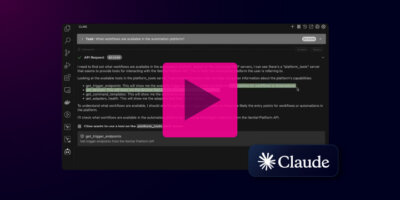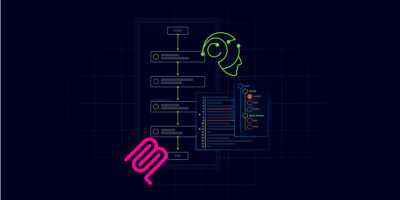Share this

Table of Contents
- “MCP Feels Like CLI for the Modern Era”
- “Read-Only MCP Unlocks Infrastructure Visibility for Non-API Folks
- “MCP Gateway Enables Standardization Across Teams”
- “Orchestration Still Missing — Lifecycle Management Actions Can Help”
- “MCP Still Requires Too Much Pre-Fill in Complex Networks”
- MCP’s Real Role in the Automation Landscape
As we roll out Model Context Protocol (MCP) across infrastructure platforms, a pressing question emerges:
Is MCP just a modern-day CLI for API-fatigued engineers — or something more transformative?
Let’s break down a few common answers.
“MCP Feels Like CLI for the Modern Era”
Argument
Yes, it absolutely does. MCP is fast, composable, and uses simple, intent-driven payloads — just like your favorite command line. It’s readable by humans, callable by agents, and works across firewalls, load balancers, cloud, and switches alike. For many, it’s finally “API access without the pain.”
Counterpoint
But isn’t that a low bar for innovation? CLIs are inherently stateless, context-blind, and prone to human error. If MCP doesn’t evolve beyond that — with memory, state tracking, and policy overlays — it risks becoming just a more verbose shell.
Verdict
MCP is a good CLI. But the world needs an AI-readable, policy-aware execution layer, not just a new interface.
“Read-Only MCP Unlocks Infrastructure Visibility for Non-API Folks
Argument
Network and infra teams have always dreaded Swagger docs, token-based APIs, and REST gymnastics. MCP’s read-only interface offers a safe, audit-friendly way to ask questions without fear of breaking anything. That alone can transform how ops teams monitor and validate changes.
Counterpoint
Read-only is powerful — but it’s also passive. Observability without correlation, recommendation, or synthesis still leaves teams buried in information, not insight. And without structured metadata standards, even read-only MCPs can yield messy or inconsistent results.
Verdict
It’s a step forward — but true observability needs LLMs to interpret, not just surface, the data. That’s where AI-native extensions to MCP become essential.
“MCP Gateway Enables Standardization Across Teams”
Argument
This is one of the most promising capabilities. Whether you’re a CLI user or a UI-first engineer, everyone hits the same Infra API Gateway. It enforces audit trails, RBAC, and execution visibility — critical for orgs trying to standardize without enforcing tools.
Counterpoint
Standardization doesn’t mean orchestration. While the gateway centralizes access, it doesn’t sequence, contextualize, or enforce dependencies. Without pairing it with a workflow engine or lifecycle mangement framework, it risks becoming a routing layer with no brain.
Verdict
The gateway is a strong foundation — but standards without service composition don’t deliver real agility.
“Orchestration Still Missing — Lifecycle Management Actions Can Help”
Argument
True — MCP isn’t meant to orchestrate. That’s the job of workflow engines, LCM (lifecycle management) systems, or external tools. But the beauty is that MCP tasks can be orchestrated, reused, and packaged as standard services.
Counterpoint
Most organizations don’t yet think in services. Without a cultural and architectural shift, LCM actions often become one-off scripts tied to specific use cases. Without design discipline, you end up with “script sprawl,” not orchestration.
Verdict
LCM is the bridge. But only if it’s modular, reusable, and intent-aware.
“MCP Still Requires Too Much Pre-Fill in Complex Networks”
Argument
Yes — today’s MCP often needs users to specify full payloads: device names, interface IDs, regions, tenants. That’s where scale breaks down.
Counterpoint
This is exactly where LLMs and graph-aware engines can step in. Pre-filling forms, validating intent, pulling context from inventory — these are solvable problems. Not by adding more UI fields, but by integrating AI with context memory.
Verdict
MCP is the surface — LLMs must be the brain.
MCP’s Real Role in the Automation Landscape
As conversations around Model Context Protocol (MCP) continue to grow, so does the confusion — and the opportunity. Here’s the truth that often gets overlooked:
MCP is promising, but misunderstood.
It’s tempting to label MCP as just a “modern CLI” — a sleeker, API-fluent interface for today’s ops teams. But that misses the point. MCP isn’t just a new input method; it’s a structured protocol designed to bridge human intent, system interfaces, and AI-driven automation. It doesn’t just run commands — it helps define them in ways that machines can understand, track, and validate. It’s not an evolution of the CLI — it’s an entirely new category of infrastructure interface.
It solves real problems for infrastructure teams.
MCP addresses the fatigue and fragmentation plaguing API adoption. By offering a predictable, reusable, and minimal interface across clouds, controllers, and devices, it gives teams the confidence to interact with infrastructure without needing to master every native API.
Whether you prefer a CLI or a GUI, MCP sits in the middle — enabling click-ops users and CLI power-users to speak the same operational language. In doing so, it promotes standardization, repeatability, and trust across teams and tooling layers.
But it’s not a silver bullet.
MCP provides structured access — not execution logic. Without orchestration engines, context awareness, or intelligent decision-making layers, MCP remains just a better way to send commands. It doesn’t solve for intent, dependencies, or state transitions. Organizations that mistake MCP for a complete automation system risk missing the forest for the trees.
The future of MCP lies in pairing it with AI.
This is where things get interesting. The moment LLMs can consume and compose MCP calls — intelligently filling parameters, correlating state, and surfacing decisions — the protocol transcends from infrastructure interface to AI execution language. When agents, not just humans, start calling MCP to observe, reason, and act — we unlock AI-native operations that are scalable, explainable, and safe.
The Bottom Line
If your goal is to enable scalable, policy-aware, AI-driven operations, MCP is the protocol you standardize on — but what you build above it is where your real advantage lies.
📝 Hear from Peter Spyrgada on the story behind our new MCP Server →
▶️ Watch a demo to see how it works →
📥 Download the Itential MCP Server →



